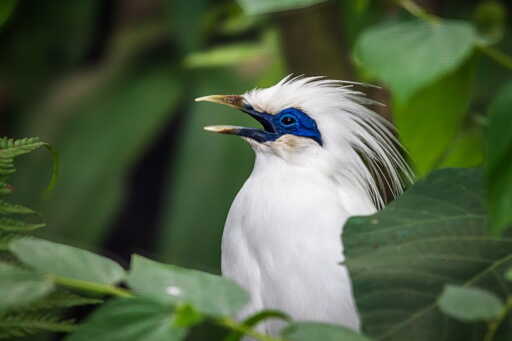NUSA PENIDA, Indonesia — Two young conservation workers rattle up on a motorbike and dismount at the edge of a coconut grove. Picking through husks, fallen fronds and stray plastic bottles, they scan the canopy, waiting in stillness. For nearly 20 minutes, nothing stirs. Then, a flash of white. A Bali starling (Leucopsar rothschildi) pokes its head from the hollow of a dead palm and darts into view before settling on a nearby branch. Moments later its mate follows, the pair taking turns caring for the nest and foraging for food. This natural cavity nest, which sits beside an artificial nest box, is only the second ever recorded on Nusa Penida, a small island off the coast of Bali. This family of starlings, also known as Bali mynas, are among the world’s rarest birds, endemic to Bali and once reduced to just six individuals in the wild. Each sighting marks a sign of hope for a species making a cautious comeback through community leadership, cultural tradition and grassroots conservation. The near collapse of the Bali starling Songbird-keeping surged across Indonesia in the mid-20th century, driven by migration, rising incomes and competitions that elevated melodious birds as status symbols. The Bali starling, prized for its striking white plumage and distinctive call, became a coveted target for collectors and trappers. Despite official protections dating back to 1958, weak enforcement across the archipelago allowed a lucrative trade to flourish, fueling an economy of trappers, breeders, trainers and cage sellers. Strict bans have sometimes…This article was originally published on Mongabay
From Conservation news via this RSS feed


